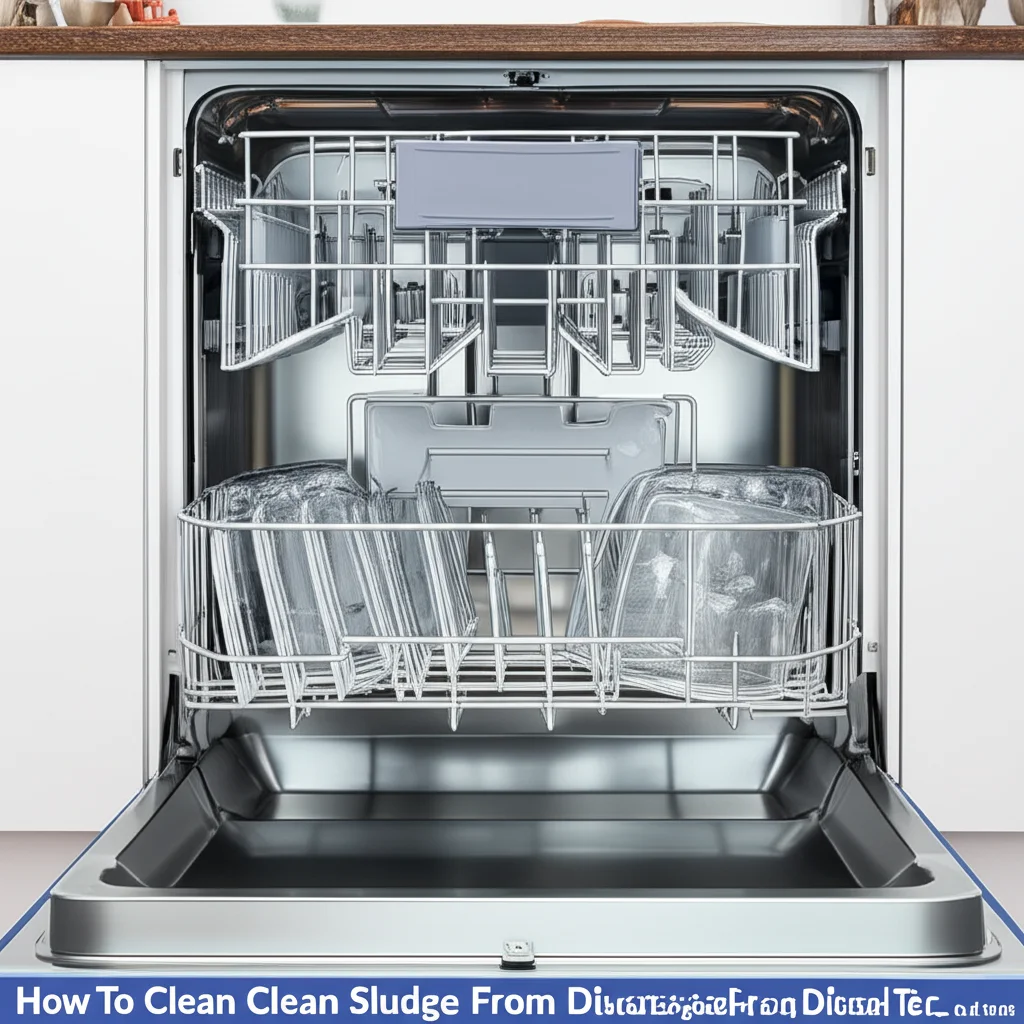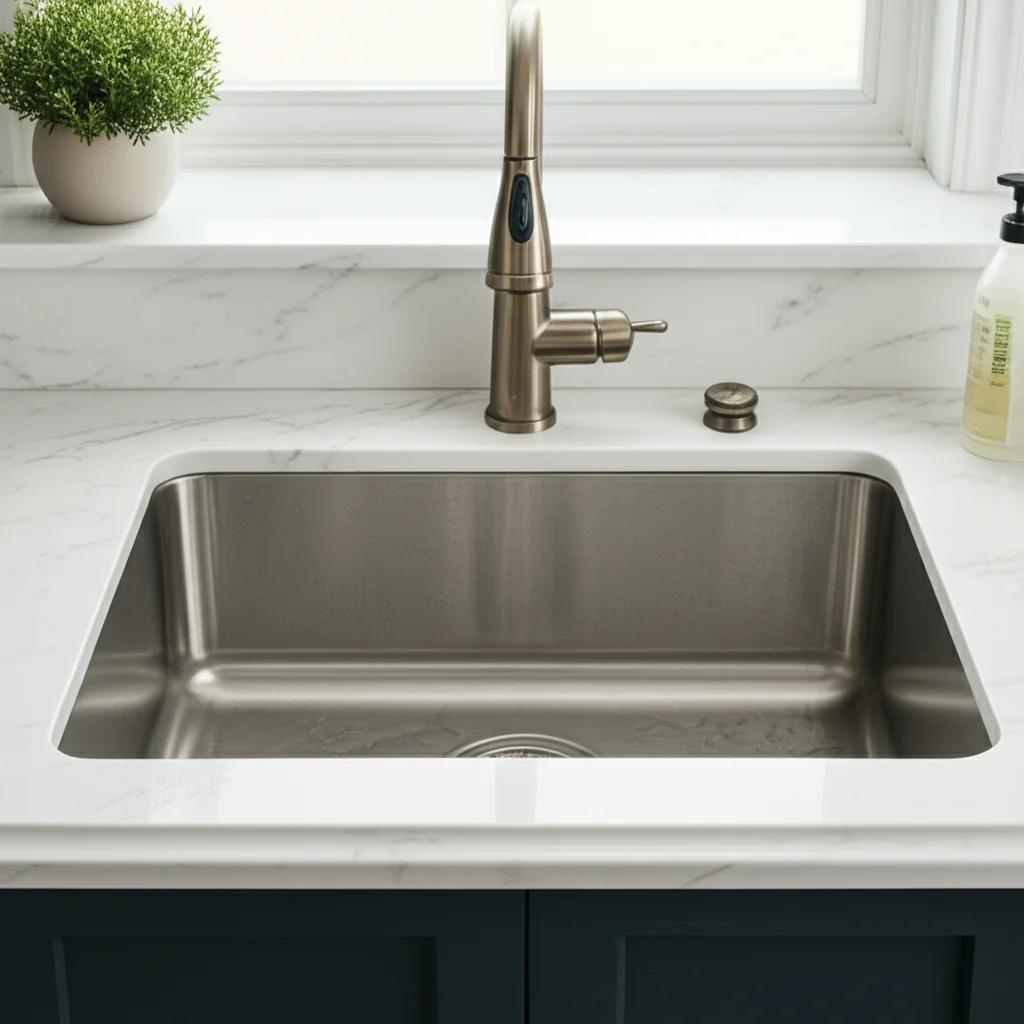· Todd Martin · Kitchen Maintenance · 18 min read
How To Clean Coffee Stains From Mugs

Banish Coffee Stains: Your Guide to Clean Mugs
Coffee is a daily ritual for many of us. That warm, comforting brew starts our mornings. Yet, over time, our favorite coffee mugs often show unsightly brown rings and discoloration. These persistent coffee stains spoil the look of otherwise clean dishware. You might wonder if your mugs can ever truly sparkle again.
Rest assured, cleaning coffee stains from mugs is a simple task. This guide will show you how to restore your mugs to their original glory. We will explore various methods, from everyday household items to more powerful solutions. You will learn the best approaches for different mug materials and how to prevent future staining. Let’s get your coffee mugs looking brand new.
Takeaway
- Act Quickly: Fresh stains are easier to remove.
- Start Gentle: Use dish soap and hot water first.
- Natural Power: Baking soda, vinegar, salt, and lemon are effective.
- Chemical Options: Bleach or denture tablets work for stubborn stains.
- Material Matters: Adapt methods for ceramic, glass, stainless steel, and plastic.
- Preventive Care: Rinse mugs promptly to avoid future discoloration.
To clean coffee stains from mugs, use a paste of baking soda and water, scrub gently, and rinse. For tough stains, soak the mug in a solution of vinegar, a denture tablet, or a small amount of bleach diluted in water, then wash thoroughly.
Understanding What Causes Coffee Stains on Mugs
Do you ever notice that brown ring forming inside your coffee cup? It is a common problem. Coffee contains tannins, which are natural organic compounds. These tannins are responsible for the color and some flavor of coffee. Over time, these compounds cling to the inner surface of your mug.
Ceramic and porcelain mugs are porous. This means they have tiny, microscopic holes. Tannins easily seep into these small pores. This leads to the brownish discoloration you see. Even glass mugs can develop stains, though often less quickly than ceramic. Plastic mugs are very prone to staining because plastic surfaces are often more porous and can absorb pigments readily.
The older the stain, the harder it is to remove. Fresh coffee stains are still on the surface. They have not yet fully bonded with the mug material. Over time, heat from the coffee and repeated exposure make the tannins stick more firmly. This creates a persistent dark layer. Understanding this helps us choose the right cleaning method. We need to break down these bonded tannins for effective cleaning.
Everyday Approaches for Light Coffee Stains
When you spot a fresh coffee stain, do not despair. Simple, everyday cleaning methods often work wonders. These approaches are gentle on your mugs. They are also easy to use with items you likely have at home. This is your first line of defense against coffee discoloration.
Start with hot water and dish soap. Rinse your mug immediately after finishing your drink. This prevents stains from setting. For light rings, fill the mug with hot water. Add a few drops of dish soap. Let it sit for a few minutes. Then, scrub the inside vigorously with a sponge or a soft brush. Often, this simple act is enough to wipe away new stains. You might be surprised how effective it is.
Another easy method uses a damp cloth or sponge with a little salt. Salt acts as a gentle abrasive. Sprinkle a small amount of table salt onto the damp sponge. Rub the stained areas in a circular motion. The salt crystals gently lift the stain without scratching the mug surface. This is particularly effective for removing thin, recent coffee rings. After scrubbing, rinse the mug thoroughly with warm water. These simple steps are great for regular maintenance and keeping your mugs pristine. You can also explore general tips for how to clean coffee stains from various surfaces.
Harnessing Natural Household Remedies for Stubborn Mugs
When basic dish soap does not cut it, natural household remedies come to the rescue. These common items offer powerful stain-fighting properties. They are safe, eco-friendly, and highly effective for more stubborn coffee stains. I find these methods incredibly reliable for restoring mugs.
Baking Soda: The Gentle Abrasive
Baking soda is a go-to cleaner for many household tasks. It is a mild abrasive and a natural deodorizer. For coffee stains, baking soda works wonders.
- Create a Paste: Mix a small amount of baking soda with just enough water to form a thick paste.
- Apply and Scrub: Apply this paste directly to the stained areas inside the mug. Let it sit for a few minutes, allowing the baking soda to loosen the tannins.
- Scrub Gently: Use a soft cloth, sponge, or even your fingers to scrub the paste into the stain. The gentle abrasive action of the baking soda helps lift the discoloration.
- Rinse Well: Rinse the mug thoroughly with warm water. The stain should be visibly lighter or gone.
I once had a mug with a truly ancient coffee stain. Baking soda paste made it disappear like magic. You can even combine baking soda with a splash of vinegar for extra effervescence if the stain is particularly tough. This combination creates a fizzy reaction that helps lift deeply set stains. This method is also useful for learning how to clean coffee maker with baking soda.
Vinegar: The Acidic Cleaner
White vinegar is another powerful natural cleaning agent. Its acidic nature breaks down tough stains. It is great for mineral deposits and coffee stains alike.
- Soak Method: Fill the stained mug with equal parts white vinegar and warm water. Let the mug soak for at least 30 minutes, or even overnight for very dark stains.
- Scrub and Rinse: After soaking, empty the mug. Scrub the remaining stains with a brush or sponge. The loosened stains should come off easily.
- Wash as Usual: Rinse the mug thoroughly and wash it with dish soap to remove any lingering vinegar smell.
I have found that combining vinegar with baking soda can be very effective for truly set-in stains. First, make a baking soda paste. Apply it to the mug. Then, pour in some white vinegar. The fizzing action will help dislodge stubborn deposits. This makes it easier to clean coffee stains from mugs.
Lemon and Salt: The Natural Brighteners
Lemon juice, with its citric acid, is a natural bleaching agent. When combined with salt as an abrasive, it creates a powerful duo.
- Cut and Apply: Cut a lemon in half. Dip the cut side into a small pile of salt.
- Scrub with Lemon: Use the lemon half as a scrubber. Rub it directly onto the stained areas inside the mug. Squeeze slightly to release more juice as you scrub.
- Rinse: Continue scrubbing until the stains diminish. Then, rinse the mug thoroughly with warm water.
This method leaves your mugs not only clean but also smelling fresh. It is particularly good for glass or ceramic mugs where you want a natural, non-toxic approach. This technique is similar to how you might tackle how to clean tea stains from mugs, as tea also contains tannins.
Considering Chemical Cleaning Agents for Tough Stains
Sometimes, natural remedies need a little help. For extremely stubborn or old coffee stains, chemical cleaning agents can be effective. Use these methods cautiously. Always follow product instructions. Ensure good ventilation.
Denture Cleaning Tablets: An Unexpected Ally
Denture cleaning tablets are designed to break down stains and food particles. They work wonderfully for coffee mugs too. The fizzing action helps dislodge tough grime.
- Fill and Drop: Fill your stained mug with warm water. Drop one denture cleaning tablet into the mug.
- Let It Fizz: Allow the tablet to completely dissolve and fizz. This usually takes 15-30 minutes. For very dark stains, you might let it sit for a few hours or overnight.
- Scrub and Rinse: Once the fizzing stops, pour out the solution. Lightly scrub any remaining residue with a sponge. The stains should wipe away easily.
- Thorough Wash: Rinse the mug thoroughly with clean water. Then, wash it with dish soap to remove any chemical residue.
This method is surprisingly effective and requires minimal effort. It is a fantastic option for ceramic and glass mugs. I have used this multiple times when all else failed, and it usually gets the job done.
Bleach: For Extreme Discoloration (Use with Caution)
Bleach is a powerful disinfectant and stain remover. It is best saved for extreme cases of coffee staining. Use bleach sparingly. Always dilute it properly.
- Dilute Bleach: Add one teaspoon of household bleach to one cup of warm water. Never mix bleach with other cleaners, especially ammonia or vinegar. This creates dangerous fumes.
- Soak Briefly: Pour the diluted bleach solution into the stained mug. Let it soak for no more than 10-15 minutes. Extended soaking can damage certain mug materials.
- Rinse Meticulously: After soaking, pour out the bleach solution. Rinse the mug meticulously under running water for several minutes.
- Wash Thoroughly: Finally, wash the mug thoroughly with hot water and dish soap. This removes all bleach residue. I stress the importance of thorough rinsing here; safety comes first.
Bleach is most effective on ceramic and glass mugs. Avoid using bleach on stainless steel, plastic, or any mug with decorative elements that might fade. For overall stain removal on other items, you can also look into how to clean stains on plastic or how to clean stains on stainless steel, as the principles might vary depending on the material. Always prioritize safety and material compatibility when choosing a cleaning agent.
Cleaning Coffee Stains from Different Mug Materials
Not all mugs are created equal. The material of your mug dictates the best cleaning approach. What works well for ceramic might not be ideal for stainless steel or plastic. Understanding these differences helps you clean coffee stains from mugs without damage.
Ceramic and Porcelain Mugs
These are the most common types of coffee mugs. They are generally durable. However, their porous nature makes them prone to staining.
- Best Methods: Baking soda paste, vinegar soak, denture tablets, and diluted bleach are all highly effective.
- Technique: Apply your chosen cleaning agent. Let it sit to break down the stains. Use a non-abrasive sponge or brush to scrub. Rinse thoroughly.
- Caution: Avoid abrasive scrubbers like steel wool. They can scratch the glaze. This makes the mug even more susceptible to future staining.
My favorite ceramic mug responds best to a baking soda and vinegar soak. It just seems to lift those deep stains.
Glass Mugs
Glass mugs offer a clear view of your beverage. They tend to show stains less easily than ceramic. However, coffee can still leave a film or ring.
- Best Methods: Hot water and soap for light stains. Baking soda, vinegar, or denture tablets for tougher ones.
- Technique: Glass is non-porous. This means stains usually sit on the surface. Gentle scrubbing with a baking soda paste is often enough. Vinegar soaks are also very effective.
- Caution: Glass can scratch. Use soft cloths or sponges. Avoid harsh abrasives. Bleach is generally safe for clear glass.
Glass mugs typically clean up with minimal effort. This makes them a good choice if you dislike persistent stains.
Stainless Steel Mugs and Travel Tumblers
Stainless steel mugs are popular for their durability and heat retention. They are less prone to deep staining compared to porous materials. However, a brownish film can still build up.
- Best Methods: Dish soap, baking soda paste, or vinegar.
- Technique: For daily cleaning, hot water and dish soap are usually sufficient. For tougher stains, make a paste of baking soda and water. Apply it to the stained areas. Let it sit for 10-15 minutes. Scrub gently with a non-abrasive sponge or cloth. Vinegar also works well; you can soak the mug in a vinegar-water solution.
- Caution: Avoid bleach on stainless steel. It can cause discoloration or pitting over time. Harsh abrasive scrubbers can also scratch the surface. This degrades the finish. To keep stainless steel looking new, avoid leaving coffee in them for long periods. You can find more comprehensive advice on how to clean coffee thermos.
I once had a stainless steel travel mug that looked awful. A good scrub with baking soda made it look almost new again.
Plastic Mugs and Reusable Cups
Plastic mugs are lightweight and shatterproof. However, they are highly susceptible to staining and odor absorption. The porous nature of plastic allows coffee pigments to bond readily.
- Best Methods: Baking soda, vinegar.
- Technique: For plastic, baking soda is your best friend. Make a thick paste. Apply it generously to the stained areas. Let it sit for a few hours, or even overnight. The longer it sits, the more it will lift the stain. Then, scrub with a soft brush. Vinegar soaks are also effective for breaking down stains and odors.
- Caution: Avoid bleach on plastic. It can degrade the plastic over time and leave a lingering chemical smell. Heat can also set stains deeper into plastic. Rinse plastic mugs immediately after use. Learning how to clean stained coffee mugs specifically for plastic requires patience and often multiple applications.
Plastic mugs require more frequent and sometimes longer soaking. But with patience, you can get those coffee stains out.
Preventing Future Coffee Stains: Keeping Mugs Pristine
Cleaning coffee stains from mugs is one thing. Preventing them in the first place is even better. A little proactive care goes a long way. These habits will keep your favorite mugs looking new for longer. This means less scrubbing for you later.
Rinse Immediately After Use
This is the golden rule of stain prevention. As soon as you finish your coffee, rinse the mug with hot water.
- Quick Action: Do not let coffee sit in the mug for hours. The longer coffee sits, the more time tannins have to bond with the mug material.
- Simple Rinse: A quick rinse dislodges loose coffee residues before they can set. This is especially true for porous materials like ceramic and plastic.
- Dishwasher Friendly: If you use a dishwasher, place the mug in it promptly. The immediate rinse cycle will prevent staining.
I always rinse my mug right after I finish my morning coffee. It has saved me countless hours of scrubbing.
Regular Deep Cleaning
Even with immediate rinsing, some discoloration might still accumulate. Incorporate regular deep cleaning into your routine.
- Weekly Scrub: Once a week, give your coffee mugs a quick scrub with baking soda paste. This prevents minor discoloration from becoming major stains.
- Rotation: If you have several mugs, rotate them. This gives each mug a chance to dry completely between uses. It also lessens the frequency of staining for any single mug.
- Material Specific Care: Tailor your deep cleaning. For ceramic, a weekly baking soda treatment is perfect. For plastic, a bi-weekly baking soda soak might be needed.
Regular cleaning prevents the buildup of layers of tannin stains. This is much easier than tackling old, set-in discoloration.
Use Dedicated Coffee Mugs
If possible, use specific mugs for coffee. This might sound obvious. But using the same mug for various beverages means different types of stains could accumulate.
- Avoid Mixing: Do not use your white ceramic mug for both coffee and tea, or other dark-colored drinks. Tea also contains tannins and can cause similar stains.
- Easier Maintenance: When a mug is solely used for coffee, you know exactly what kind of stain you are dealing with. This simplifies the cleaning process.
I have a dedicated set of coffee mugs. This makes it easier to manage their cleanliness. Remember, a clean mug also means a better-tasting coffee. This is a simple step you can take to keep your mugs looking their best and minimize the effort needed to clean coffee stains from mugs.
Advanced Stain Removal and Dealing with Persistent Discoloration
Sometimes, coffee stains become truly stubborn. They resist regular cleaning and even initial attempts with natural remedies. This section focuses on advanced strategies and what to do when stains seem impossible to remove. These methods build upon previous ones or introduce more intensive approaches.
Overnight Soaks for Deeply Set Stains
For stains that have been accumulating for months or even years, a long soak can work wonders. This allows the cleaning agent more time to penetrate and break down the deeply embedded tannins.
- Extended Baking Soda Soak: Fill the mug with hot water. Add a generous amount of baking soda (2-3 tablespoons). Stir to dissolve some of it. Let the mug sit overnight. In the morning, empty the mug and scrub. The stains will be significantly softer and easier to remove.
- Vinegar Soak Revival: For truly tough cases, a pure white vinegar soak can be effective. Fill the mug entirely with undiluted white vinegar. Allow it to sit for 12-24 hours. The strong acid will work to dissolve the most persistent stains. Remember to wash thoroughly with soap and water afterward to remove any vinegar smell.
I once had a set of mugs from a thrift store with terrible stains. An overnight baking soda soak, followed by a light scrub, made them look like new.
Using Abrasive Sponges (with Caution)
While generally advised against, a slightly more abrasive sponge can be used very carefully for specific, resilient stains on certain mug types.
- Material Check: This method is primarily for durable ceramic or porcelain mugs with a strong glaze. Never use this on glass, plastic, stainless steel, or mugs with delicate designs.
- Gentle Pressure: Use a non-metallic abrasive sponge (like a melamine foam eraser, often called a “magic eraser”). Dampen the sponge and gently rub the stained area.
- Monitor Closely: Apply minimal pressure. Observe if the stain lifts without scratching the glaze. Stop immediately if you see any signs of scratching. The goal is to lift the stain, not damage the mug.
I only resort to this for the absolute toughest stains, and even then, I am extremely cautious. It is easy to damage a mug this way.
Commercial Mug Cleaners
Several commercial products are specifically designed for coffee and tea stain removal. These can be an option if all else fails.
- Choose Wisely: Look for cleaners marketed for “coffee stain removal” or “kitchen stain removers.” Read reviews and product descriptions carefully.
- Follow Instructions: Always adhere strictly to the manufacturer’s instructions for application, soaking time, and rinsing. These products contain stronger chemicals.
- Safety First: Ensure good ventilation. Wear gloves if recommended. Store products safely away from children and pets.
These products are often effective. However, they are usually a last resort due to their chemical nature. I prefer to stick to the natural or milder chemical options first. The overall goal is to effectively clean coffee stains from mugs while keeping safety and mug integrity in mind. For a broader understanding of stain removal techniques, you might find more general advice on how to clean coffee mug.
FAQs About Cleaning Coffee Stains from Mugs
Q1: Why do my coffee mugs stain so easily?
A1: Coffee contains tannins, which are natural pigments. Mugs, especially ceramic and plastic ones, have tiny pores in their surface. These tannins seep into these pores over time. This causes the brown discoloration you see. Heat from the coffee makes these pigments bond more firmly to the mug material.
Q2: Is bleach safe to use on all types of mugs?
A2: No, bleach is not safe for all mugs. It is generally safe for glazed ceramic and glass mugs when diluted properly and used briefly. Avoid bleach on stainless steel, plastic, or mugs with delicate designs. Bleach can cause discoloration, pitting, or degradation of these materials. Always rinse mugs thoroughly after using bleach.
Q3: How often should I clean coffee stains from my mugs?
A3: Ideally, rinse your mug immediately after each use to prevent stains from setting. For deep cleaning, aim for once a week with baking soda. If you drink coffee daily, a weekly deep clean keeps mugs looking new. For mugs used less often, clean them as soon as you notice any discoloration.
Q4: Can I use a dishwasher to clean coffee stains?
A4: Dishwashers are great for general cleaning. However, they may not remove deeply set coffee stains completely. The high heat can sometimes even set fresh stains further. For best results, pre-treat heavily stained mugs with baking soda or vinegar before putting them in the dishwasher.
Q5: What if my mug still smells like coffee after cleaning?
A5: Lingering coffee odors can happen, especially with plastic mugs. A vinegar soak is excellent for removing smells. Fill the mug with undiluted white vinegar and let it sit overnight. You can also try filling the mug with crumpled newspaper for a day or two; the paper absorbs odors.
Q6: Will abrasive scrubbers ruin my mugs?
A6: Yes, abrasive scrubbers like steel wool can scratch the surface of most mugs. This is especially true for ceramic and glass. Scratches create more microscopic pores. This makes the mug even more prone to future staining. Stick to soft sponges, cloths, or gentle abrasive pastes like baking soda.
Conclusion
Coffee stains on mugs are a common issue. Yet, they are not a permanent problem. We have explored many effective ways to clean coffee stains from mugs. You now have a range of options, from simple dish soap to powerful natural remedies like baking soda and vinegar. For the toughest stains, solutions like denture tablets or cautious use of diluted bleach offer a solution.
Remember, the material of your mug plays a role. Ceramic, glass, stainless steel, and plastic each benefit from specific care. The best approach is often proactive. Rinsing your mug immediately after use and performing regular deep cleans can prevent most stains. By following these steps, you can keep your favorite coffee mugs looking bright and new. Say goodbye to unsightly brown rings and enjoy your coffee in sparkling clean cups every day. Start reclaiming your mugs’ original shine today!
- coffee stains
- mug cleaning
- stain removal
- kitchen tips
- home hacks





